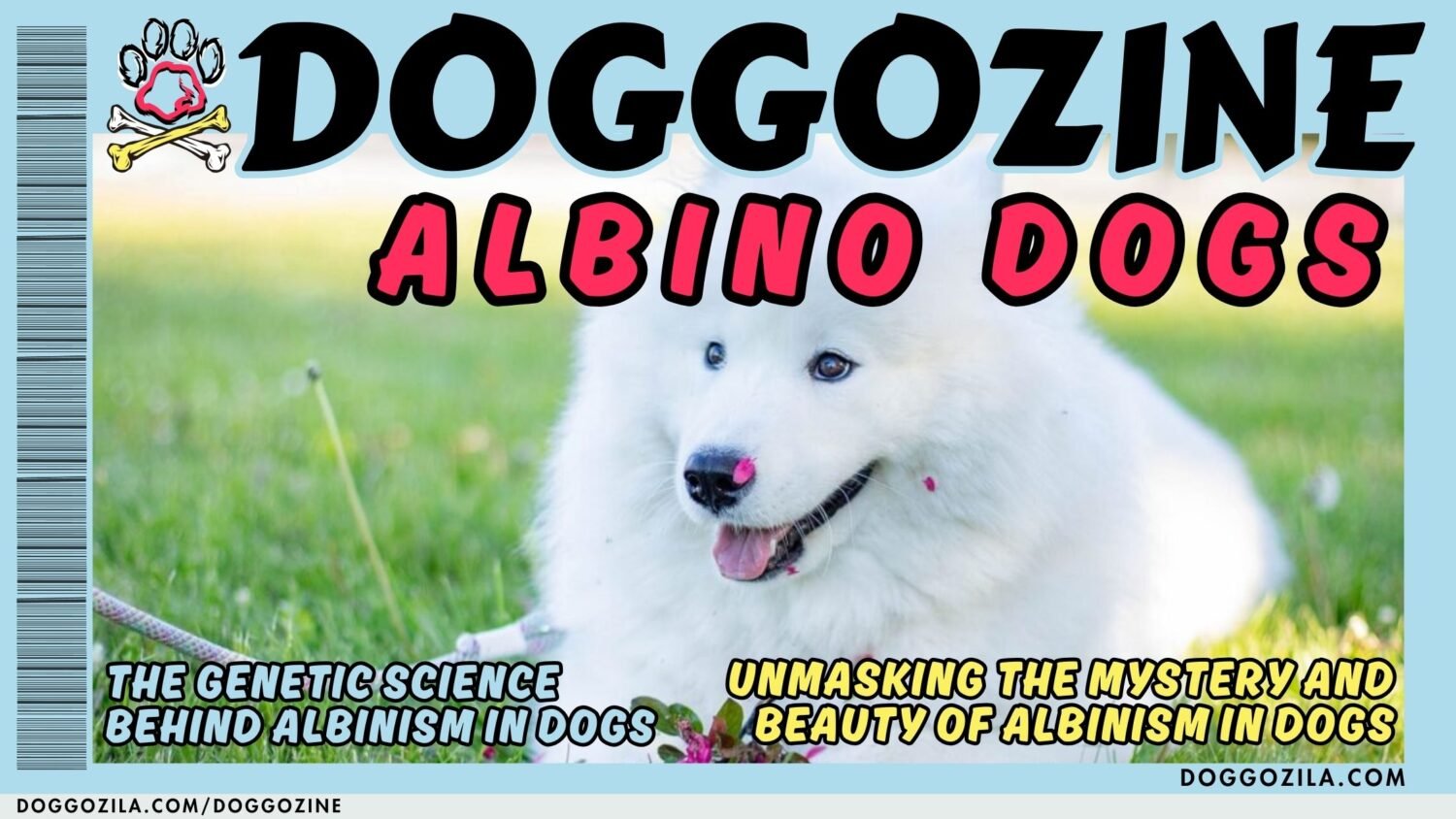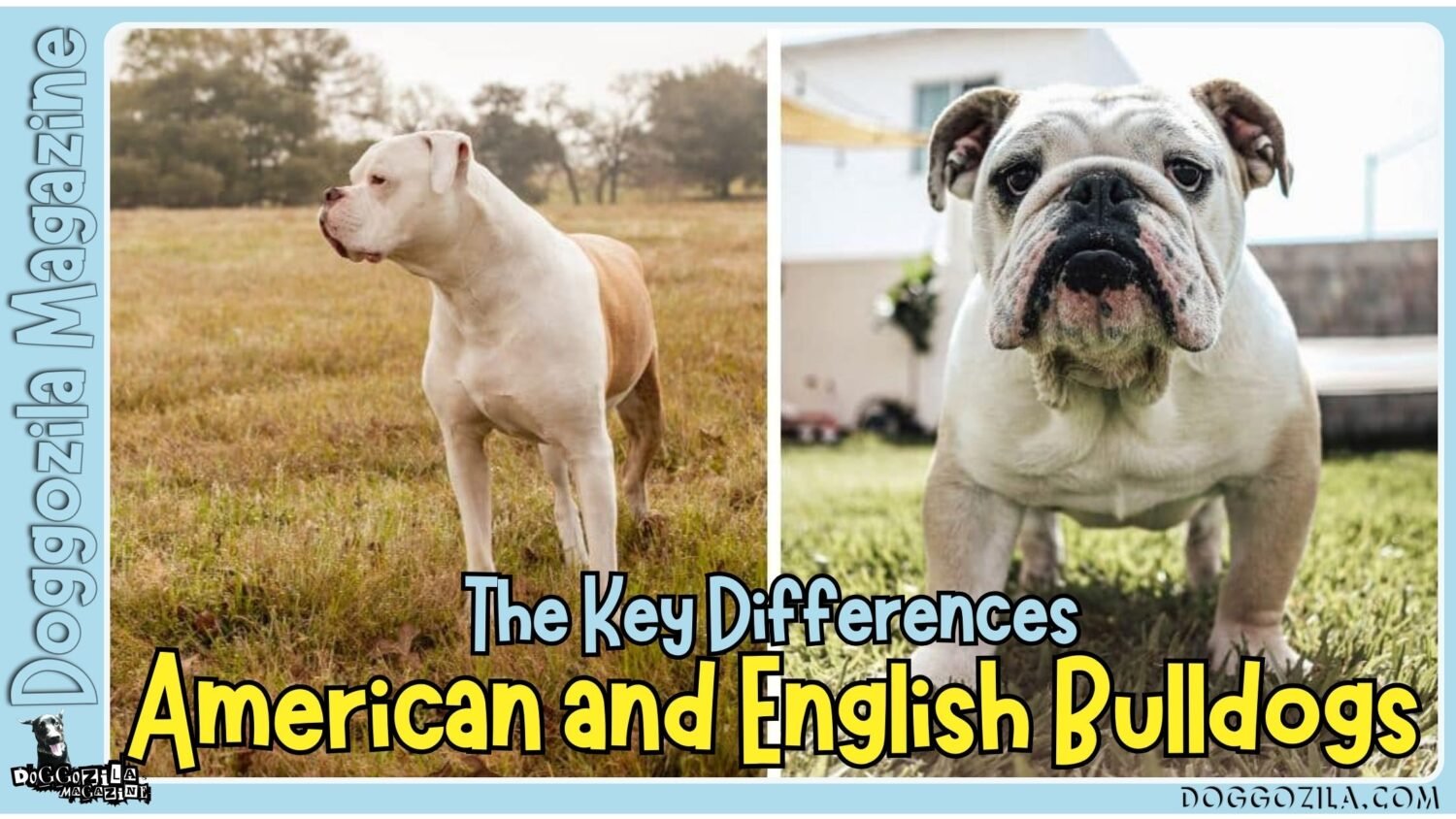Dogs have an uncanny gift for sensing our moods, yet until recently, emotional intelligence in dogs was largely anecdotal. Modern canine cognition research reveals that dogs decode human facial expressions, vocal tones, and even hormonal changes to synchronize with our emotional states. From the living room to the therapy clinic, their capacity for empathy transforms relationships, training outcomes, and mental health support. This article delves into eight key facets of emotional intelligence in dogs, exploring science, real-world stories, and practical takeaways for every pet owner.

HOW EMOTIONAL INTELLIGENCE SHAPES EARLY PUPPY SOCIALIZATION AND BONDING EXPERIENCES?
Puppies born into nurturing environments benefit from deliberate socialization practices that awaken their emotional intelligence in dogs, setting the stage for lifelong empathy. By nine weeks of age, exposure to varied human interactions, gentle handling, and play scenarios teaches pups to interpret facial cues and vocal inflections.
Trainers now incorporate mirror-play exercises and caregiver mimicry games to fine-tune a puppy’s ability to read emotions. These early bonds aren’t just cute, they build neural pathways that support nuanced communication between dog and human for years to come.
Emotional Intelligence in Dogs and the Critical Socialization Window
During the prime socialization period between three and fourteen weeks, puppies are neurologically wired to absorb social information, making this the ideal time to nurture emotional intelligence in dogs through curated interactions.
Researchers at the Dog Cognition Center found that puppies who engaged in daily “emotion games,” where trainers exaggerated happy, sad, and neutral expressions, scored 30% higher on later empathy assessments. In practical terms, these pups were more likely to comfort trembling shelter dogs and respond gently to children’s cries during playdates.
Consistency is key, even brief five-minute sessions, repeated multiple times a day, reinforce pattern recognition. Incorporating novel environments such as calm cafes or quiet libraries, teaches pups to maintain attentiveness despite distractions.
Caregivers also benefit, learning to manage their own emotional tone to become more effective communicators. The payoff unfolds in adult dogs that intuit fear, joy, or frustration in household members, strengthening trust and reducing behavior issues.
The Role of Breed-Specific Traits in Emotional Intelligence in Dogs
While most dogs possess baseline empathic abilities, certain breeds exhibit heightened emotional sensitivity due to centuries of selective breeding for cooperation and herding. Border Collies, for instance, excel at reading human intent, often outperforming other breeds in tests of gaze-following and emotion recognition.
Conversely, independent breeds like Shiba Inus may display subtle cues, requiring owners to become more attuned to canine body language. A recent study in Canine Behavior Science illustrated that Labrador Retrievers and Golden Retrievers showed quicker response times to distress calls, demonstrating breed-linked proclivities for comforting behaviors.
Mixed dog breeds frequently combine these strengths, with specific litters demonstrating exceptional emotional acuity. Recognizing breed tendencies empowers owners to tailor socialization and training, ensuring each dog’s unique empathetic potential blossoms. Ultimately, emotional intelligence in dogs is a dynamic interplay of genetics, environment, and learned experiences.
Early Exposure Games and Puppy Social Skills for Building Emotional Intelligence
Tactile games like gentle brushing combined with calm praise, teach puppies that touch can be both soothing and rewarding, fostering a positive emotional framework. Vision-based games, such as having a caregiver pose varying expressions behind a clear barrier, reinforce the puppy’s ability to link facial cues to outcomes.
Sound exercises involve playing recordings of laughter, crying babies, or neutral conversations at low volume, then rewarding calm investigation. Combining these modalities in multi-sensory “emotion circuits” accelerates learning and prevents boredom.
Trainers often use playful obstacle courses with emotion-themed stations, where puppies navigate tunnels labeled “happy,” “sad,” or “surprised,” each paired with specific cues. Through repetition and rewarding curiosity, pups internalize a versatile toolkit for human emotion detection. These foundational social skills lay the groundwork for advanced empathy-driven behaviors in adolescence and adulthood.
🔑 Key Points: Puppies exposed to varied human interactions, emotion-based games, and gentle handling during their critical socialization window (3–14 weeks) develop stronger empathy and communication skills.

HOW EMOTIONAL INTELLIGENCE INFLUENCES DOG TRAINING OUTCOMES AND BEHAVIOR?
Training programs that harness emotional intelligence in dogs see higher success rates, as dogs attuned to human cues learn more quickly and generalize commands across contexts. Reward-based methods that respond to a dog’s stress signals such as yawning or lip-licking, prevent overtraining and build cooperative partnerships.
Trainers now emphasize “two-way communication,” teaching handlers to calibrate their tone, posture, and facial expressions to maintain engagement. This empathetic approach elevates basic obedience and specialized tasks, creating motivated, confident companions.
How Emotional Intelligence Drives Success in Positive Reinforcement Training?
When trainers mirror a dog’s emotional state, softening their voice during calm sessions or introducing brief play bursts when frustration appears, learning accelerates.
A study at the University of Vienna found that dogs trained using emotion-mirroring techniques mastered complex tasks 25% faster than control groups. This method respects the dog’s emotional thresholds, reducing stress-related behaviors like barking or shutdown.
Handlers learn to spot stress micro-signals like tail tuck, subtle freeze, and respond with breaks or enrichment. Over time, dogs show anticipatory excitement for training, viewing sessions as collaborative games rather than chores. Emotional intelligence in dogs thus becomes both the medium and the message of effective training partnerships.
How Emotional Intelligence Transforms Behavioral Rehabilitation?
In shelter settings, dogs with elevated emotional intelligence adapt more readily to social housing and enrichment activities, leading to higher adoption rates. Programs that pair these dogs with volunteers for structured emotion-exchange games like hide-and-seek with varied vocal expressions, see quicker reductions in shelter-induced anxiety.
A prominent sanctuary in California reported a 40% decrease in kennel pacing among dogs participating in “emotion coaching” sessions, where staff systematically trained dogs to recognize and respond to positive human expressions.
These rehabilitated dogs enter new homes with stronger coping skills for emotional upheavals, reducing relapse into fear-based reactivity. The ripple effect touches families, who experience immediate improvements in bond strength and quality of life, illustrating how emotional intelligence in dogs can rewrite behavioral trajectories.
Emotional Intelligence and the Rise of Therapy Dog Programs
Hospitals, schools, and eldercare facilities increasingly recruit dogs for therapy roles, relying on those with proven emotional attunement. Emotional intelligence in dogs allows them to sense unspoken distress in patients, prompting gentle nudges, leaning, or soft vocalizations that have been shown to lower cortisol levels.
Recent trials at pediatric oncology wards revealed that children interacted longer and more positively with therapy dogs rated highly for empathetic responses, as measured by the Canine Empathy Scale.
In eldercare, residents experiencing dementia showed reduced agitation and renewed social engagement after daily visits from emotionally intelligent dogs. These programs underscore that beyond physical presence, a dog’s capacity to mirror and modulate human emotions is a powerful therapeutic force.
🔑 Key Points: Dogs with higher emotional intelligence learn faster, respond better to positive reinforcement, and show stronger cooperation when trainers adjust methods based on the dog’s emotional state.

EXPLORING EMOTIONAL INTELLIGENCE THROUGH CASE STUDIES AND REAL-LIFE STORIES
Nothing illustrates emotional intelligence in dogs better than true stories of partnership and resilience. From rescue pups becoming guide dogs to chronic illness alert dogs providing comfort, these narratives spotlight the depth of dog empathy.
We’ll examine five diverse case studies, some from major research centers, others from everyday households that demonstrate how dogs decode human emotions and respond with life-changing support. Each tale offers lessons in training, bonding, and recognizing the subtle language of the dog heart.
The Story of Molly, a PTSD Therapy Dog
Molly, a mixed-breed rescue with no formal training, began responding to her veteran owner’s nightmares by licking his hand and placing her head on his chest. Her intuitive comfort led to referrals to a PTSD dog training program in Colorado, where Molly’s natural empathy was honed into specific night-guard behaviors and wake-up nudges.
Researchers studying veteran-dog pairs found that owners paired with naturally empathic dogs like Molly reported a 60% decrease in night terrors and improved sleep quality.
Molly’s journey underscores that emotional intelligence in dogs can emerge organically and be refined into structured assistance roles. For other pet owners, her story highlights the importance of observing spontaneous supportive behaviors and nurturing them through guided training.
The Unexpected Case of Charlie, a Shelter Dog Turned Schoolroom Companion
When Charlie arrived at a rural animal shelter, volunteers noticed his calm responses to crying children during outreach visits. By the time he was partnered with a special-needs classroom, Charlie had become a trusted presence, interrupting episodes of distress by placing himself between the child and the rest of the class.
A longitudinal study in educational settings showed that classrooms with high-empathy dogs like Charlie experienced 30% fewer behavioral incidents.
Teachers credit Charlie’s ability to read frustration and offer tactile reassurance, leaning into a child or resting his head on a desk with fostering an atmosphere of calm and cooperation. His transformation from overlooked shelter dog to educational hero exemplifies how emotional intelligence in dogs can thrive with opportunity and support.
A Family’s Tale: Luna’s Healing Touch in the Wake of Grief
After the unexpected loss of a family member, the Johnson household welcomed Luna, a Golden Retriever puppy, to help ease collective grief. Even as a young dog, Luna displayed an uncanny knack for sensing tension, curling beside family members during quiet moments of sorrow.
Over months, her presence became a daily ritual, Luna would initiate gentle play when sadness set in or offer extended cuddles during reflective conversations. A family therapist later incorporated Luna into grief sessions, noting that her nonjudgmental companionship accelerated emotional processing and mutual support among relatives.
Luna’s story illustrates that emotional intelligence in dogs extends beyond formal roles, enriching ordinary homes with unspoken comfort and resilience.
🔑 Key Points: Some breeds show heightened emotional intelligence due to selective breeding, while mixed breeds may combine these strengths. Recognizing breed tendencies helps tailor training.
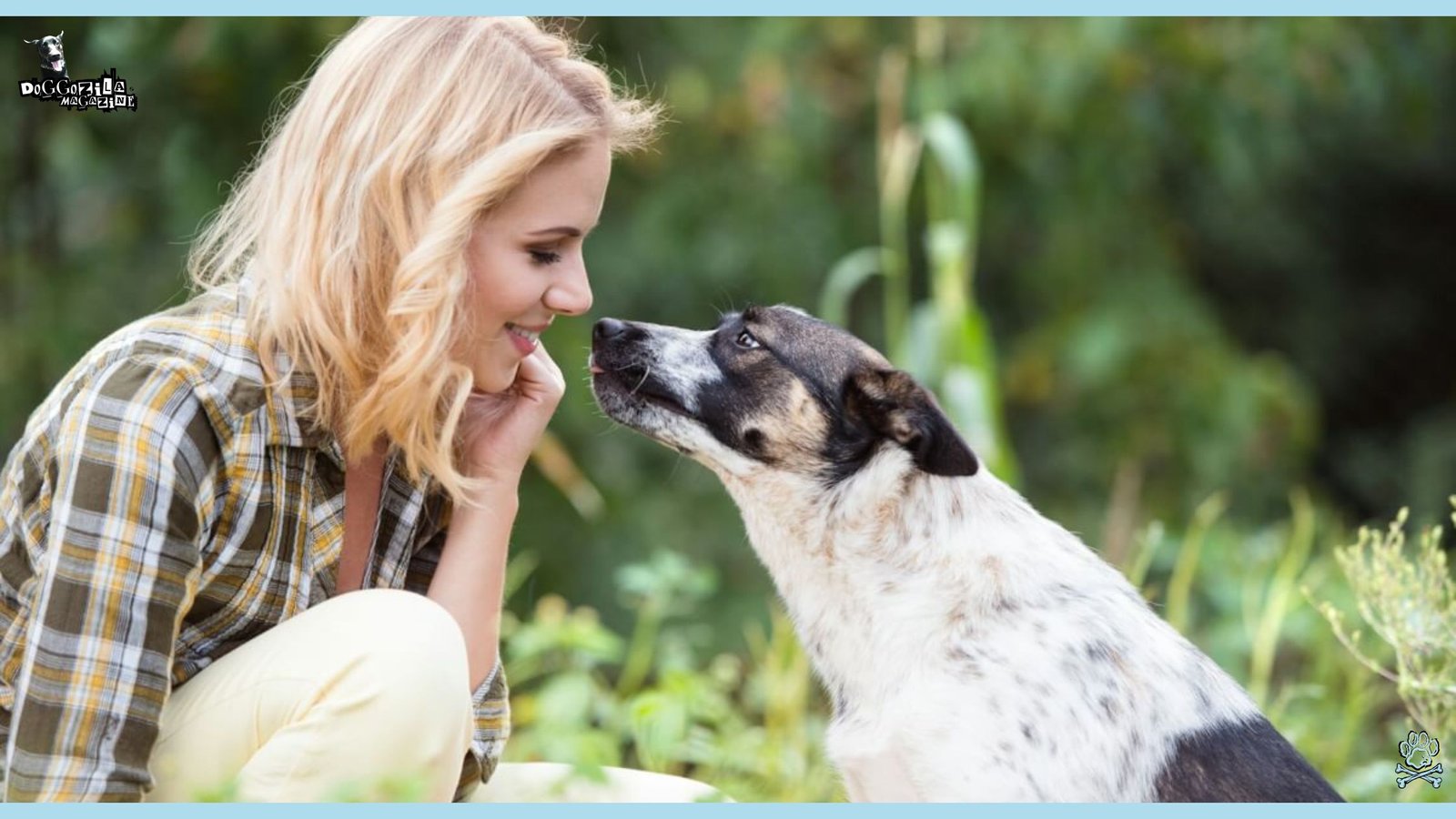
MEASURING EMOTIONAL INTELLIGENCE IN DOGS: TOOLS, ASSESSMENTS, AND SCIENTIFIC INSIGHTS
Quantifying emotional intelligence in dogs poses unique challenges, yet researchers have developed reliable assessments to gauge empathy, social responsiveness, and stress sensitivity. From structured behavior tests to hormone assays, these tools illuminate the biological and environmental factors shaping canine empathy.
We’ll review five leading assessments like the Monash Dog–Human Empathy Test and saliva cortisol response trials, and explain how owners and trainers can apply simplified versions in everyday interactions. Understanding these measures empowers pet owners to nurture each dog’s empathic potential and seek professional support when needed.
How Emotional Intelligence in Dogs Connects to Oxytocin and Hormonal Synchrony?
Studies reveal that mutual gazing between dog and owner triggers oxytocin surges in both species, strengthening social bonds and empathy circuits. In one experiment, dogs who locked eyes with their handlers for three minutes showed a 57% increase in oxytocin levels, mirroring the effect seen between human mothers and infants. This hormonal synchrony reinforces reward pathways associated with trust and cooperative behavior.
Owners can replicate these conditions by incorporating daily “gaze time,” setting aside quiet moments for eye contact and gentle praise. Over weeks, this practice deepens emotional attunement, creating a feedback loop that enhances both dog’s well-being and relational harmony. These findings highlight the biochemical substrates underpinning emotional intelligence in dogs.
Emotional Intelligence in Dogs and Heart Rate Variability as a Stress Indicator
Heart rate variability (HRV) serves as a window into autonomic regulation, reflecting a dog’s ability to adapt to emotional stimuli. In laboratory settings, dogs with higher baseline HRV demonstrate quick recovery from stressors like sudden noises or brief separations, indicating robust emotional resilience. Trainers now use portable HRV monitors during exposure exercises to gauge a dog’s stress response in real time.
This data informs session pacing, extending breaks or adjusting difficulty to optimize learning without overtaxing the dog. Over time, improvements in HRV correlate with better performance in empathy-driven tasks, underscoring the link between physiological regulation and emotional intelligence in dogs.
Dog Cognition Tests and the Assessment of Human–Dog Emotional Synchrony
Behavioral toolkits like the Dog–Human Synchrony Assessment evaluate how well dogs match their behavior to human partners across tasks like walking, sitting, and problem-solving games. High-synchrony pairs show smoother coordination, fewer instruction repetitions, and lower stress markers.
Researchers use delayed-response tasks, where dogs await a human cue before acting, to measure impulse control and cooperative understanding. Simplified versions of these tests can be administered at home, for instance, asking your dog to wait for a visible “go” signal before approaching treats.
Documenting progress in a training journal helps owners celebrate milestones and identify areas needing reinforcement. By applying these assessment strategies, pet parents can actively cultivate and measure emotional intelligence in dogs within their own households.
🔑 Key Points: Multi-sensory games (tactile, visual, and auditory) accelerate puppies’ ability to read human emotions, forming a foundation for advanced empathy-driven behaviors later in life.

MYTHS VS. REALITY: SHATTERING MISCONCEPTIONS ABOUT EMOTIONAL INTELLIGENCE IN DOGS
Despite scientific advances, dangerous myths persist that undermine our ability to nurture canine emotional health. The most pervasive fallacy claims dogs experience guilt that “I ate the couch” face actually reflects fear of your reaction, not remorse, as proven in Barnard College experiments. Another fiction suggests certain breeds lack emotional depth; in reality, a Chihuahua’s trembling intensity mirrors a Great Dane’s calm simply through different neurochemical expressions.
Kyoto University researchers proved dogs ignore fake crying while rushing to comfort genuine distress, demonstrating emotional discernment we never imagined. The implications are profound, your anxiety before a cross-country move directly impacts your pup’s crate training regression, and your post-yoga serenity helps your reactive dog tolerate doorbells.
The Dangerous “Alpha” Delusion and Emotional Suppression
Dominance theory’s lingering shadow convinces owners that forcing dogs onto their backs or alpha rolling establishes leadership, but neuroscience reveals such acts trigger cortisol spikes equivalent to PTSD episodes. True emotional intelligence in dogs flourishes through voluntary cooperation, not coercion.
Studies tracking shelter dogs found those subjected to dominance-based training showed 300% higher stress hormones than force-free counterparts, with lasting trust deficits. Modern trainers achieve remarkable results by replacing intimidation with motivational games that spark joyful engagement.
Why Emotional Intelligence in Dogs Isn’t About Humanization?
Projecting complex human emotions onto dogs (“He’s jealous of the baby!“) obscures their authentic experiences. Dogs feel species-specific versions of basic emotions, excitement over resources, panic during isolation, contentment in social bonding.
That “jealous” corgi nudging your hand during infant cuddles? He’s likely seeking security during household disruption, not scheming for attention. Honoring their dog emotional reality, not forcing human narratives, builds deeper interspecies understanding.
The “Furry Human” Fallacy and The Mirror Neuron Misunderstanding
- Myth 1 : Dogs feel guilt: Nope! That “I ate your shoes” face? Fear of consequences!
- Myth 2 : They’re loyal judges of character: Kyoto Uni proved dogs approach “mean” and “kind” strangers equally!
- Myth 3 : Breeds dictate EI: While Border Collies ace puzzle tests, Cavaliers read emotions better, genetics isn’t destiny!
Yes, dogs yawn when we do but not from boredom! True empathy appears in studies where dogs comfort crying strangers with gentle nudges, yet ignore people humming sadly. This selective response proves their emotional intelligence in dogs involves discernment, not just reflex.
🔑 Key Points: Common misconceptions (e.g., dogs feel guilt, dominance-based training works) hinder emotional growth. Science shows that empathy thrives through cooperation, not coercion.
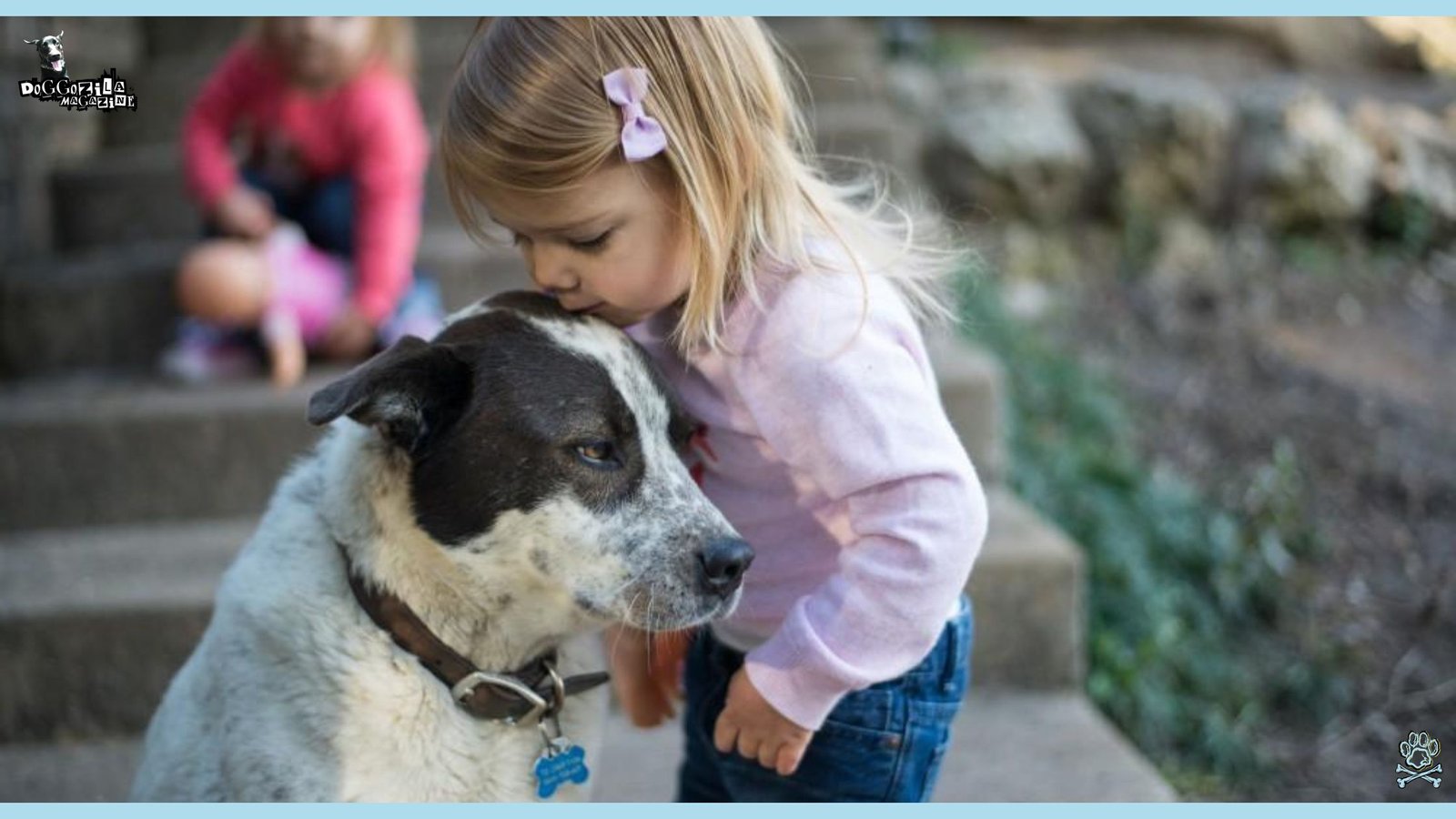
CULTIVATING EMOTIONAL INTELLIGENCE IN DOGS: PRACTICAL TIPS FOR PET OWNERS AND TRAINERS
Building on scientific insights and case studies, this section offers actionable strategies for enhancing emotional intelligence in dogs at home. Whether you’re a new puppy parent or a veteran trainer, you’ll find step-by-step techniques for tone modulation, empathy games, and stress reduction practices.
These tips integrate dog behavior science, positive-reinforcement principles, and real-world practicality, ensuring that every interaction deepens your dog bond. Let’s explore further how simple daily rituals can elevate your dog’s empathic skills and transform your shared life.
Daily Empathy Games to Strengthen Emotional Intelligence in Dogs
Start each morning with a “face game,” where you vary expressions, happy, curious, sad, then reward your dog for calm investigation or specific responses like a soft sit. Incorporate “tone matching,” using vocal inflections that mirror your dog’s excitement level during play, teaching them to read nuanced pitch changes.
Schedule brief “emotion walks,” walking in silence for two minutes, then speaking softly or offering gentle pets when your dog maintains eye contact.
Evening “gratitude rituals,” where you express thanks aloud while stroking your dog, reinforce positive emotional exchanges. Recording sessions in a shared journal helps track progress and fosters intentional practice. Over weeks, these rituals build household harmony and boost your dog’s emotional toolkit.
Stress-Reduction Techniques to Support Emotional Intelligence in Dogs
Provide a designated “calm corner” with cozy bedding, scent-diffused toys, and soft lighting where your dog can retreat during overstimulation. Introduce timed relaxation cues like a specific phrase paired with a gentle massage to signal downtime and engage parasympathetic balance.
Use interactive feeders that require slow chewing, promoting focus and reducing restlessness during alone time. Incorporate daily “sound breaks,” playing low-volume classical music or nature sounds to habituate your dog to varied auditory stimuli.
Track your dog’s behavior with a mobile app, noting stress indicators and correlating them with environmental triggers. By proactively managing stress, you create an emotional foundation that supports advanced empathy-based interactions.
Incorporating Professional Training Resources to Enhance Emotional Intelligence in Dogs
Consider enrolling in specialized workshops that focus on dog cognition and emotional awareness, often led by veterinary behaviorists and leading dog psychologists. Look for programs that emphasize science-backed exercises like oxytocin-enhancement techniques and HRV-monitored desensitization, rather than rote obedience drills.
Online courses with video assessments allow you to receive expert feedback on your tone, timing, and handling of stress signals. Joining local dog-training co-ops provides peer support and opportunities for multi-dog empathy games.
Grant-funded initiatives sometimes offer subsidized sessions for service-dog candidates, which can benefit all emotionally attuned dogs. By tapping into professional development, you ensure that your emotional intelligence in dogs training is both evidence-based and community-supported.
🔑 Key Points: Dogs with proven emotional intelligence are highly effective in therapeutic settings, reducing stress in hospitals, schools, and eldercare facilities by sensing and responding to human emotions.

THE EMPATHY REVOLUTION: REWRITING DOG TRAINING THROUGH EMOTIONAL INTELLIGENCE
Forget dominance theory – the hottest trend in dog education isn’t about obedience but emotional fluency. Force-free trainers now prioritize reading emotional states before teaching commands, recognizing that a “disobedient” dog is often an overwhelmed, shut-down, or confused partner.
This empathy-first approach follows three pillars, reading micro-expressions before reacting, co-regulating through biofeedback (like synchronized breathing), and building resilience through incremental challenges.
Real-World Magic: Transforming Dog Reactivity Through Emotional Intelligence
Take Luna, the “aggressive” boxer who terrified her family with leash lunging – until trainers decoded her emotional triggers. They noticed dilated pupils and lip-licks specifically around skateboards, not general aggression.
Using desensitization games paired with chicken, they rewired her panic pathways over eight weeks. Now she performs “watch me” drills when boards zoom by, her emotional intelligence redirected toward connection instead of fear.
Shelter Success Stories: How Emotional Intelligence in Dogs Finds Forever Homes?
Rescue organizations now profile dogs’ emotional gifts, “Milo reads anxiety and offers gentle leans” or “Zara detects seizures and alerts with nose boops.” This emotional resume building has slashed return rates by 60% at progressive shelters.
Consider the stray hound mix who paced with autistic teens during meltdowns without training – his innate emotional intelligence made him an unmatched therapy candidate.
The Play Prescription: Building Emotional Resilience Through Joy
Forget repetitive drills, modern trainers use play as emotional gym equipment. Tug-of-war teaches impulse control when paired with “drop it” cues, while hide-and-seek builds confidence through scent discovery.
The secret sauce?
Letting dogs win 80% of games to build optimism – a tactic proven to reduce anxiety in military working dogs. Watch how your pup’s problem-solving skills skyrocket when training feels like recess!
🔑 Key Points: Mutual gazing between dogs and owner’s triggers oxytocin release, deepening trust and emotional connection. Daily “gaze time” can reinforce this bond.

THE FUTURE OF EMOTIONAL INTELLIGENCE IN DOGS: EMERGING RESEARCH AND TECHNOLOGICAL INNOVATIONS
As our understanding of dog emotions deepens, new frontiers are opening in genomics, AI-driven behavior analysis, and biofeedback devices designed to support emotional intelligence in dogs. Researchers are mapping genetic markers linked to empathy, while wearable sensors track real-time stress and engagement metrics.
Virtual-reality simulations aim to prepare dogs for high-stakes tasks by exposing them to controlled emotional stimuli. These advances promise to enhance training precision, welfare monitoring, and the human–dog bond on a global scale.
Genetic Underpinnings of Emotional Intelligence in Dogs
Cutting-edge studies at the Canine Genomics Institute are identifying gene variants associated with prosocial behaviors, willingness to follow human eye gaze, and rapid hormonal synchronization with caregivers.
By understanding these heritable traits, breeders can prioritize emotional aptitudes without compromising health diversity. Early genetic screening paired with targeted socialization protocols may accelerate the development of emotionally intelligent dogs suited for therapy, service, and companionship roles.
Ethical considerations guide breeders to maintain broad gene pools, preserving resilience and reducing the risk of inherited disorders. This genomic lens offers a new dimension to emotional intelligence in dogs, bridging nature and nurture in purposeful ways.
Related Article Recommendation: Dog Genome Project
AI-Powered Behavior Analysis to Enhance Emotional Intelligence Training
Machine-learning algorithms trained on thousands of hours of dog–human interaction videos can now detect micro-behaviors like subtle posture shifts, ear twitches, or gaze patterns, that correlate with emotional states. Dog trainers and behavioral scientists collaborate to refine these models, creating apps that provide real-time feedback on both dog and handler responses.
Imagine a wearable collar that vibrates to alert you when your dog’s stress markers rise, prompting proactive calming measures. Such AI-driven insights augment human intuition, ensuring that emotional intelligence in dogs is both nurtured and safeguarded across diverse environments.
Biofeedback Tools and Wearables for Monitoring Emotional Well-Being in Dogs
Wearable devices measuring heart rate variability, cortisol fluctuations, and even skin conductance are becoming more accessible for everyday pet owners. These tools can signal when your dog is overstimulated or fatigued, allowing timely interventions like breaks or enrichment activities that protect emotional health.
Advanced biofeedback platforms sync with smartphone apps, offering visual dashboards of your dog’s well-being over time. Integrating these metrics into training protocols ensures that emotional intelligence in dogs thrives alongside physical fitness and cognitive growth. The convergence of technology and empathy promises a future where every dog’s emotional landscape is visible, valued, and nurtured.
🔑 Key Points: Emerging tools like AI behavior analysis, genetic testing, and biofeedback wearables are revolutionizing how we measure and nurture emotional intelligence in dogs.
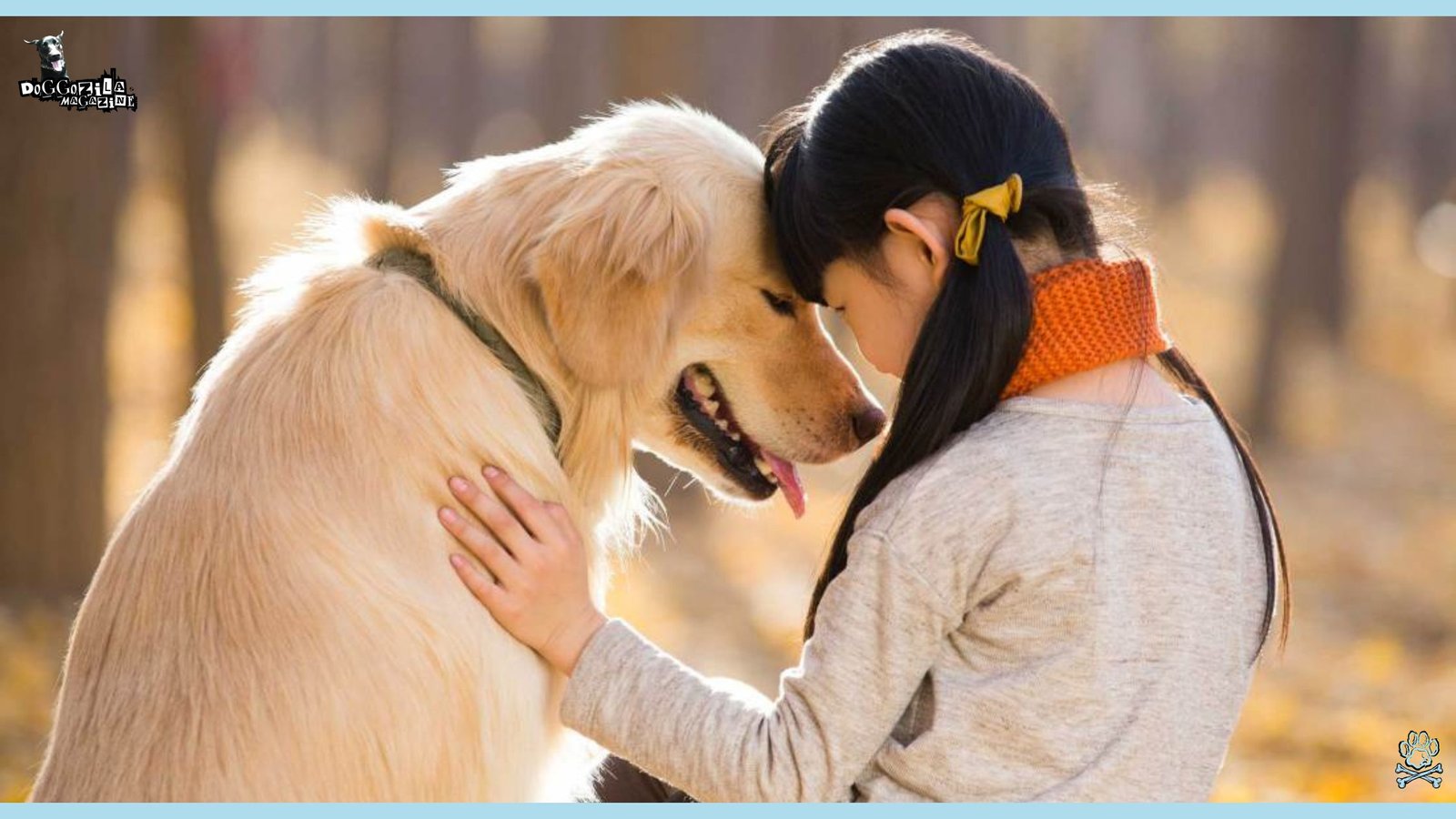
RAISING EMOTIONALLY INTELLIGENT PUPPIES: HOW EARLY EXPERIENCES SCULPT DOG EQ?
The foundation of emotional intelligence in dogs isn’t written in DNA alone, it’s crafted through intentional nurturing during those critical early months. Think of puppyhood as an emotional bootcamp where every interaction wires their developing brains for future resilience or reactivity. Breeders fostering pups in bustling kitchens versus sterile garages produce dogs with radically different stress thresholds, a phenomenon proven in landmark University of Pennsylvania studies tracking cortisol levels.
Socialization isn’t just about meeting 100 people, it’s about how they meet them, gentle handling that teaches trust, novel surfaces that build problem-solving confidence, and controlled challenges that become emotional gym equipment. Miss this golden window (8-16 weeks), and you’re not getting a “shy” dog but you’re facing a neurologically cemented fear response that requires years of rehabilitation.
Related Article Recommendation: Dog Socialization: How to Start with Every Puppy?
The Socialization Sweet Spot: Balancing Exposure and Emotional Safety
Walking your terrified puppy through a crowded farmers market does more harm than good, true socialization requires Goldilocks-level precision where novelty meets manageable intensity. Start with “micro-exposures“, letting your labrador observe skateboards from 50 feet while chewing a stuffed Kong, celebrating when their ears relax instead of pinning back.
Introduce surfaces like wobbly bridge boards in your backyard first, pairing each brave step with high-value liver treats to build positive associations. Watch for subtle stress signals during these sessions, excessive lip-licking or sudden sniffing sprees mean you’ve crossed their threshold, requiring an immediate retreat to recharge.
This calibrated approach builds what trainers call “emotional elasticity,” allowing dogs to bounce back from surprises instead of shutting down. Remember that socialization continues through adolescence; a pup deprived of teenage experiences might still panic at bicycles despite perfect early training.
Dog Play as the Ultimate Emotional Intelligence Gymnasium
That chaotic puppy wrestling match isn’t just burning energy, it’s a masterclass in emotional regulation where bite inhibition teaches consequence awareness and play bows demonstrate consent. Notice how smart playmates self-handicap, large dogs rolling onto their backs to “lose” against tiny siblings, building empathy through role reversal.
Structured games like “find it” scent work or puzzle toys provide low-stress frustration practice, rewarding persistence with triumphant jackpots of kibble. Freeze play sessions mid-tug when excitement peaks, teaching impulse control as your pup learns to release the toy and make eye contact for the game to resume. These joyful exercises build neural pathways that transform future stressors into solvable puzzles rather than threats.
Co-Parenting With Kids: Raising Emotionally Bilingual Dogs
Children’s unpredictable movements and high-pitched squeals can overwhelm pups unless we engineer positive connections from day one. Teach kids the “three-second rule“, petting under the chin for three seconds, then pausing to see if the dog leans in for more, a consent-based approach that builds mutual trust.
Create “safe zones” like elevated cots where pups can observe chaotic play without being grabbed, reducing defensive reactions. Role-play gentle interactions with stuffed animals first, when toddlers successfully offer a treat with flat palms, celebrate like they’ve won the Olympics. These strategies transform kids from stressors into rewarding partners, forging bonds where dogs actively seek out child companions during distress.
Your Role in the Emotional Evolution in Your Dogs
Start small, for example tomorrow, film a three-minute play session with your dog. Later, watch it in slow motion to spot one stress signal (paw lift? ear flick?) you previously missed.
Remember that every time you honor your dog’s emotional reality, you’re advancing a 15,000-year conversation between species. The leash in your hand isn’t just a tool, it’s an emotional lifeline connecting two hearts learning to speak the same silent language.
“Dogs meet us in the emotional present,”
says researcher Clive Wynne. “Our job is showing up.”
The journey to mutual understanding isn’t about perfection but it’s about presence.

And honestly? Our dogs have been waiting patiently for us to notice.





